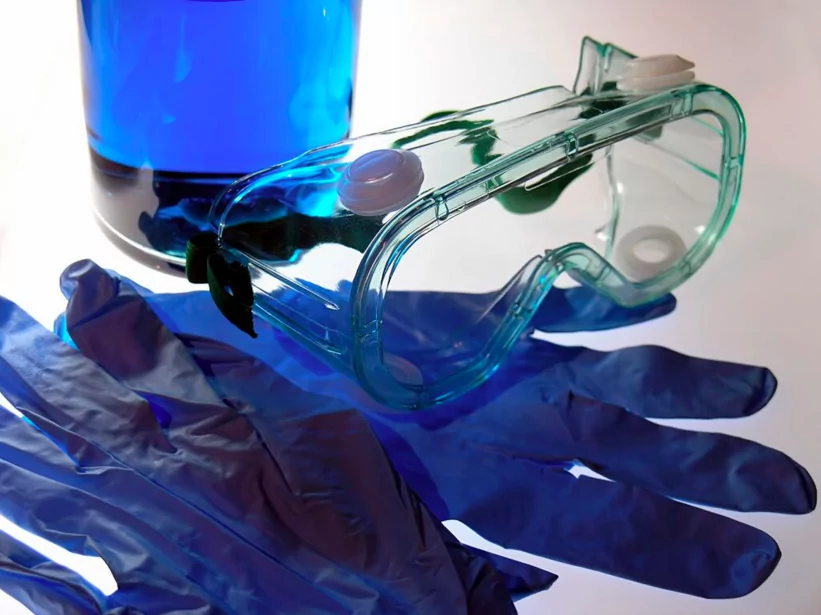How to Avoid Serious Lab Safety Breaches with Thorough Training

It has been reported that a worker and supervisor at one of Canada’s most revered disease labs, located in Winnipeg, had essentially no safety training. That person became infected with one of the diseases he had been charged with handling in the lab.

The National Post was one media outlet reporting on the issue, and the organization was able to obtain reports from the Public Health Agency of Canada prepared over a period of years, showing this wasn’t the first time such an infection happened in a lab.
While the technician who became ill did recover, what’s striking to note about this instance is the lack of formalized or required safety training seen in the lab.
An agency review said the following about the situation: “The supervisor had never attended (bio-safety cabinet) training, biological and chemical spill training or general laboratory safety training.”
The report went on to say the supervisor said there wasn’t enough time to train and also complete other required tasks.
The organization at hand has gained national and international praise for developing a vaccine and drug treatment for the Ebola virus, but this also highlights the danger of the diseases being worked at within this particular lab.
The incident actually took place in 2012 but never came to light in the media until this year.
A separate agency survey was conducted in 2014, and of the 54 responding labs, there were 46 infections reported over the past five years. The investigation also showed that workers handling things like E.coli would regularly touch vials without wearing gloves, or without doing any basic disinfection.
CDC Considers Installing Cameras After Its Own Mishaps
This failure to train employees on safety protocol isn’t exclusive to laboratories in Canada, and, in fact, the U.S.-based Centers for Disease Control (CDC), has been under quite a bit of fire in recent years for having similar problems occur.
Reuters reports the CDC is now monitoring employees with the use of lab cameras in an attempt to gain back lost faith from the public after some missteps made by employees of the organization.
A worker from the CDC accidentally contracted Ebola in 2014 while working with a virus sample that was supposed to have been inactive, which was in reality still live.
Another incident in 2014 showed an Atlanta-based employee inadvertently sent anthrax to a low-security lab, and in a separate incident, a version of bird flu was sent to an outside organization.
The CDC’s director of laboratory safety told Reuters when the addition of lab cameras was first announced that it was being done to monitor workers and ensure they precisely follow safety protocols.
Many biosafety officials have expressed criticism directed at the CDC for not improving safety protocols sooner in the face of so many avoidable incidents. In response to this and other issues, the CDC did announce the creation of an agency-wide group that would provide standardized lab training for employees.
With all of these lab-related controversies, it’s worthwhile to question whether or not the answer to the issues of the CDC can be solved by installing cameras. Instead, it might be wiser to put that monetary investment toward preventative training of employees in a way that could help not just monitor these problems, but instead stop them before they occur.
Safety Training Tips for Lab Employees

What’s interesting to note about the original situation mentioned in this post is that the lab employee who became ill in Canada said he didn’t receive training because it wasn’t mandatory and there wasn’t enough time, given the other requirements of his job.
The first safety tip for any laboratory setting is to make training mandatory. Check with local, national and international governmental agencies and incorporate their requirements into your mandatory training.
Beyond making at least regulatory training mandatory, moving to an e-Learning delivery style is incredibly advantageous. Lab employees often have packed and demanding schedules that simply don’t allow time for traditional classroom training. e-Learning is the fastest way to deliver the most content efficiently.
What’s also great about using a learning management system for lab training is that it offers technicians the ability to refer to information as-needed using their tablet or smartphone. Just having immediate, on-demand access to training materials can alleviate a lot of possible safety issues and breaches in protocol. When you’re designing an e-Learning for lab employees, do so with this in mind. Make navigation simple and create brief modules that can be quickly used as a reference point.
If you include scenarios and videos, make sure these are brief as well so that they can be used as a reference without taking a lot of time out of technicians’ work schedule. When creating e-Learning content for lab technicians, supervisors, and related employees, you should also incorporate a table of contents or quick point of reference that will guide them through content.
Another reason an LMS is your best training bet for lab employees?
Choosing a learning management system that offers training tracking and automated reporting will help ensure your lab is compliant and in case there ever is an incident you can easily refer to it and see whether or not employees underwent necessary training.
Not only is mandatory training a good idea for laboratory employees, but it’s also important to make safety and compliance training interesting. If employees aren’t engaged, they’re not actually learning, and if they’re not learning, training is of no use.
Consider making it interesting through gamification, scenarios and videos.
You should also clearly demonstrate to employees how training will impact their daily lives and their job performance.
Finally, training should be ongoing. This is a good idea in nearly any organization, but when health and safety are involved it’s a necessity. Ensure that you’re providing regular refresher courses to employees on the most important concepts, and build on their basic knowledge as your lab technicians advance through their careers.
This is another place where e-Learning is optimal because you can quickly update information without having to do a total overhaul of training. Lab safety standards and compliance are ever-evolving so having an e-Learning platform will let your training evolve as much as these standards do.
What are your thoughts on safety training in the laboratory, and the potential role that can be played by e-Learning?